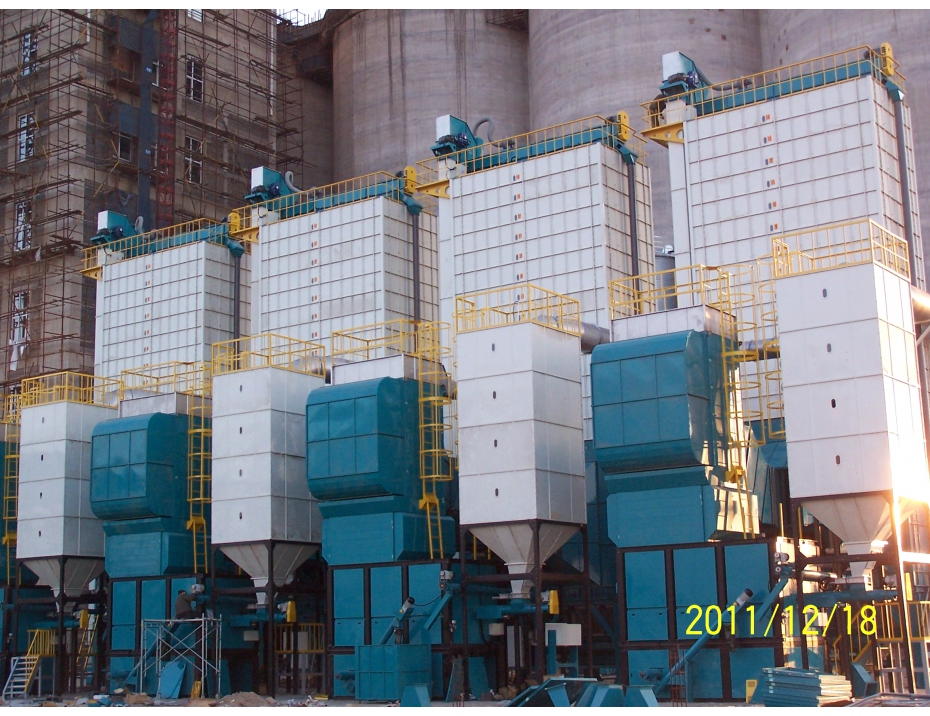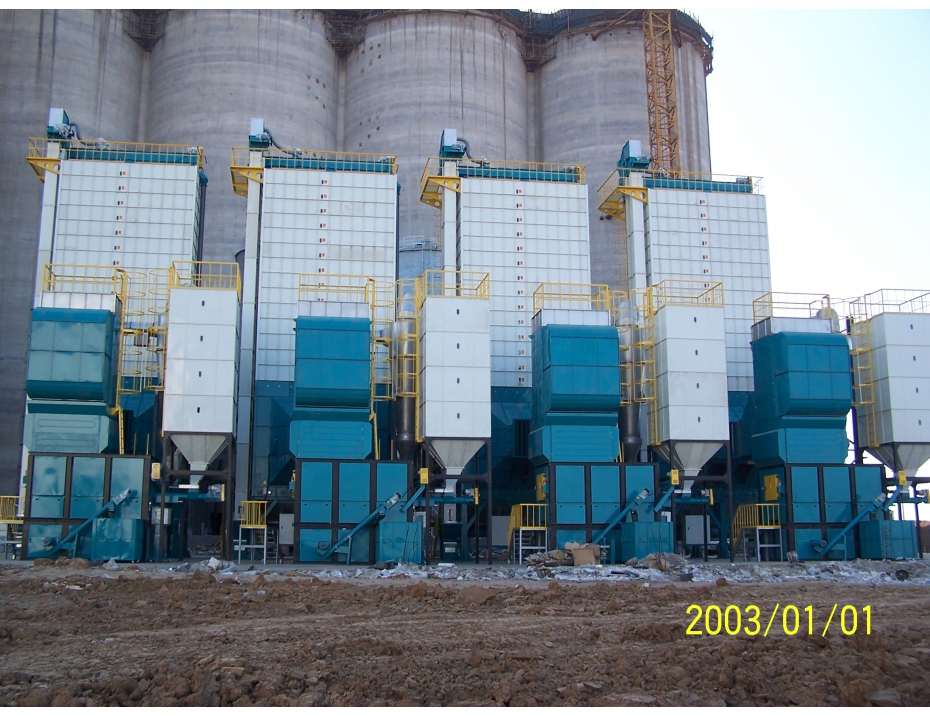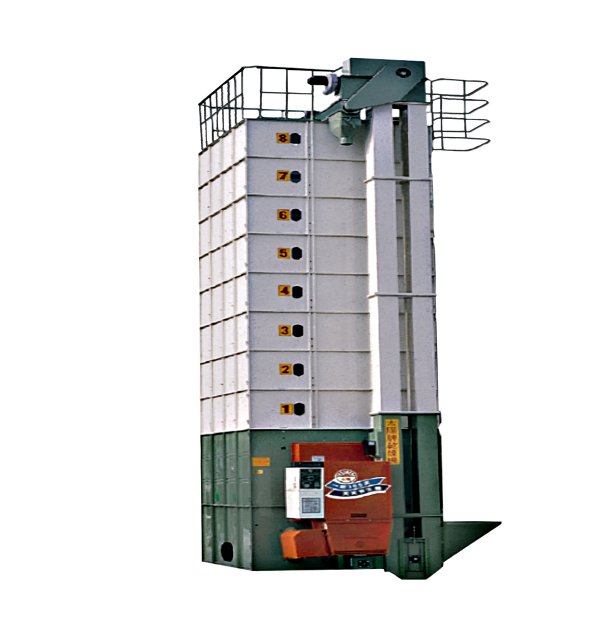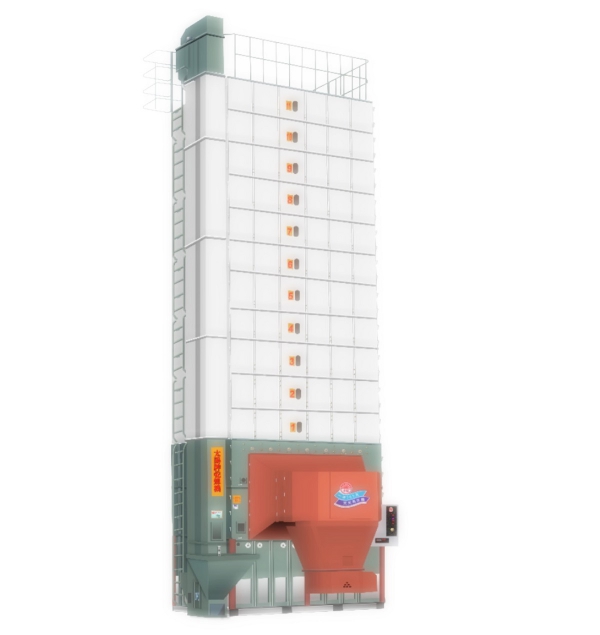F130T Circulating Grain Dryer (F1000, F1300)
The F130T series (F1000, F1300) is a circulating grain dryer developed by Sanshen Agricultural Machinery Technology Co., Ltd., designed for large-scale grain drying operations with a processing capacity ranging from 50 to 130 tons.
Key Features
Energy Efficiency: Utilizes rice husk combustion as a drying heat source. Approximately 3 kg of rice husk provides the same heat value as 1.3 liters of diesel, significantly reducing drying costs.
Environmental Benefits: Burning rice husks helps address agricultural waste disposal issues, while the resulting ash can be used as compost material, promoting resource recycling.
High Return on Investment: In times of high fuel prices, this equipment can greatly reduce fuel expenses. On average, drying 100 metric tons of grain can save approximately 1,500 to 2,000 liters of diesel.
Specifications Overview
Processing Capacity:
F1000: ~95 tons of rice or 100 tons of wheat
F1300: ~124 tons of rice or 130 tons of wheat
Dimensions:
F1000: Length 9,355 mm, Width 7,165 mm, Height 18,148 mm
F1300: Length 10,053 mm, Width 7,098 mm, Height 21,342 mm
Loading Time:
Rice: ~85 minutes (F1000) / ~63 minutes (F1300)
Wheat: Same as rice
Unloading Time:
Rice: ~75 minutes (F1000) / ~54 minutes (F1300)
Wheat: Same as rice
Drying Efficiency:
Rice: Initial moisture 32% reduced to 14%, drying rate of 0.8–1.2% per hour
Wheat: Initial moisture 30% reduced to 14%, drying rate of 1.0–1.4% per hour
Power Requirements:
Rated voltage: 220V/380V/440V, 50/60Hz (three-phase)
Maximum power consumption: 69.75 kW (F1000) / 81.05 kW (F1300)
Safety Features
Equipped with multiple safety measures, including air pressure detection, overload relay, rotation speed monitoring, full-level sensor, ignition failure detection, and an emergency stop button, ensuring safe operation.
Standard Equipment
Includes an online moisture meter, touchscreen interface, feed hopper, and full-level shut-off device for enhanced ease of operation.
This grain dryer is ideal for agricultural producers requiring high-performance, high-capacity drying solutions. By utilizing agricultural by-products as fuel, it not only lowers costs but also aligns with eco-friendly practices.
Energy Efficiency: Utilizes rice husk combustion as a drying heat source. Approximately 3 kg of rice husk provides the same heat value as 1.3 liters of diesel, significantly reducing drying costs.
Environmental Benefits: Burning rice husks helps address agricultural waste disposal issues, while the resulting ash can be used as compost material, promoting resource recycling.
High Return on Investment: In times of high fuel prices, this equipment can greatly reduce fuel expenses. On average, drying 100 metric tons of grain can save approximately 1,500 to 2,000 liters of diesel.
Specifications Overview
Processing Capacity:
F1000: ~95 tons of rice or 100 tons of wheat
F1300: ~124 tons of rice or 130 tons of wheat
Dimensions:
F1000: Length 9,355 mm, Width 7,165 mm, Height 18,148 mm
F1300: Length 10,053 mm, Width 7,098 mm, Height 21,342 mm
Loading Time:
Rice: ~85 minutes (F1000) / ~63 minutes (F1300)
Wheat: Same as rice
Unloading Time:
Rice: ~75 minutes (F1000) / ~54 minutes (F1300)
Wheat: Same as rice
Drying Efficiency:
Rice: Initial moisture 32% reduced to 14%, drying rate of 0.8–1.2% per hour
Wheat: Initial moisture 30% reduced to 14%, drying rate of 1.0–1.4% per hour
Power Requirements:
Rated voltage: 220V/380V/440V, 50/60Hz (three-phase)
Maximum power consumption: 69.75 kW (F1000) / 81.05 kW (F1300)
Safety Features
Equipped with multiple safety measures, including air pressure detection, overload relay, rotation speed monitoring, full-level sensor, ignition failure detection, and an emergency stop button, ensuring safe operation.
Standard Equipment
Includes an online moisture meter, touchscreen interface, feed hopper, and full-level shut-off device for enhanced ease of operation.
This grain dryer is ideal for agricultural producers requiring high-performance, high-capacity drying solutions. By utilizing agricultural by-products as fuel, it not only lowers costs but also aligns with eco-friendly practices.













